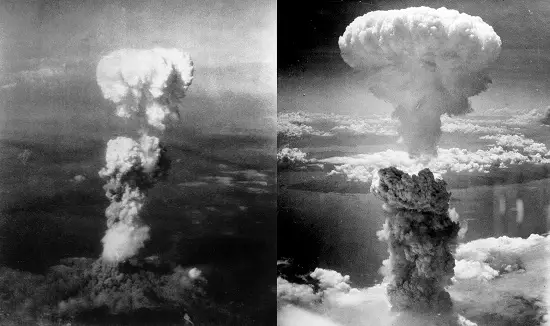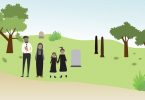| North American children know about Hiroshima. |
| They are taught about the dangers of nuclear war. |
| Sometimes they learn the details of the damage that was done. |
| They learn about what happened at 8:15 am on August 6, 1945. |
| People were eating breakfast, children were going to school and adults going to work. |
| There was a blinding flash of light, a scorching heat, and a mushroom cloud rose up. |
| People close to the explosion were instantly vaporized. |
| Many of those further away would die from burns and radiation. |
| Sixty thousand houses were destroyed immediately. |
| One concrete structure remained standing, although it was damaged. |
| The local government left the Atomic Dome standing as a memorial to the explosion. |
| Even those who were not seriously injured in the explosion later became very ill. |
| They became very sick from radiation poisoning. |
| Many developed leukemia. |
| Sadako Sasaki was two years old when the bomb exploded. |
| She was apparently uninjured and grew up normally until she was twelve. |
| Then she developed leukemia – a disease of the blood and bone marrow. |
| Sadako began to fold paper cranes to protect her from the illness. |
| However, she died in 1955 before she reached one thousand paper cranes. |
| Her example inspired the Children’s Monument at Hiroshima. |
| There is a Peace Museum in Hiroshima which has objects left by the explosion. |
| These include bottles, metal, stones and tiles twisted into strange shapes by the heat. |
| There are objects on which people were vaporized, so that their shape appears like a shadow on the material. |
| There are bits of burnt clothing and many photographs. |
| Why was the bomb dropped? |
| World War II was a long and bitter war. |
| The rules of war, which said not to kill civilians, were forgotten. |
| Hitler bombed London, hoping to break the spirit of the English. |
| Then England bombed Germany to destroy the factories and kill the people who worked in them. |
| Americans wanted revenge for the Japanese attack on Pearl Harbor. |
| The U.S. government had spent $6 billion developing the A-bomb and wanted to use it. |
| Some say that they also wanted to warn the Russians not to cause trouble for America. |
| When American forces advanced on Japan in 1945, they had to decide what to do. |
| Would Japan surrender, or would they fight to the last soldier? |
| American leaders feared that they might lose many men by an invasion. |
| Dropping the atomic bomb would end the war very quickly. |
| President Truman made the decision to use it. |
| Since then, most people have felt that this decision was wrong. |
| It was such a terrible thing to do to people – children, old people, women, men and babies. |
| Hiroshima inspired many people to try to “ban the bomb”. |
| They wanted to ensure that atomic bombs would not be used again. |
| Even some of the scientists and aircrews involved in making and dropping the bomb at Hiroshima wanted it banned. |
| Perhaps if we can all remember what happened that day, there will be no more Hiroshima’s. |
Subscribe
0 Comments
Oldest





